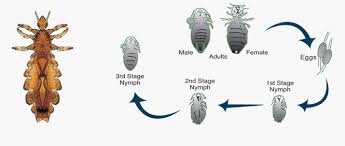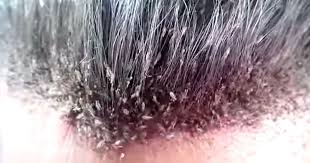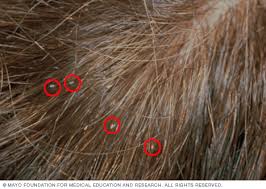Study Guide: Head Lice
Head Lice in Schools
There’s unfortunately little that can do to ward off head lice. Kids will be kids, and when they put their heads together or share hats, lice will spread. Your best defense is to examine your child’s hair and scalp regularly to catch an infestation early. Quick treatment will help prevent the lice from spreading to the rest of the family. Head lice is less of a problem in middle school, but it’s still good to be forewarned and ready.
What Are Head Lice?
Head lice are tiny six-legged insects that cling to the scalp and neck and feed on human blood. Each louse is about the size of a sesame seed and can be hard to spot. Lice eggs, called nits, are glued onto hairs near the scalp and can be even harder to see. Lice do not carry diseases.
Who Gets Head Lice?
Head lice are most common in young children who go to day care, preschool, or elementary school. Children of this age often play together closely and with more hair-to-hair contact, and they may share brushes, hats, hair clips, and the like. Adults who live with children also have a higher risk of getting head lice.
How Head Lice Spread
Lice usually spread through direct head-to-head contact that allows the pests to crawl from one person’s hair into another’s. Lice can also survive for a short period on clothing or other personal items, so a shared hairbrush can help a louse find a new host. Lice cannot jump or fly from one person to another.
How to Spot Head Lice
Although lice and their nits are small, they are visible to the naked eye. Head lice can be white, brown, or dark gray. They are most often found in the hair at the back of the neck or behind the ears. The nits are round or oval specks that are tightly glued to hairs near the scalp. If you try to slide the nits off, they won’t budge. Recent research suggests combing through wet hair is an ideal way to spot an infestation.
Symptoms of Head Lice
Spotting a live louse or nymph (a young louse) is often the only sign of an infestation. Seeing nits alone doesn’t confirm an infestation. In many children, head lice don’t cause any discomfort. When symptoms do occur, the most common problem is itching that may start weeks or even months after the lice move in.
Head Lice Allergies
The itching from lice is caused by an allergic reaction to the bug bites. A lot of scratching may lead to sores or raw skin on the scalp. It’s not common, but sores from scratching can become infected. Call a doctor quickly if the skin becomes red, swollen, or painful; or the lymph nodes in the neck become tender. These may be signs of a skin infection.
If You Suspect Head Lice
Head lice will not go away on their own. If you suspect your child has an infestation, there are several steps you should take right away. Call your doctor to confirm the diagnosis. Notify your child’s day care or school so other students can be checked. Examine all other members of the household for signs of lice. Finally, treat everyone who’s infected at the same time.
Getting Rid of Lice
You can find lice killing treatments over the counter. They are made from extracts of chrysanthemums or a synthetic version that is similar. They are considered safe, but they may not be recommended for young children. SOMETIMES LICE ARE RESISTANT to these. Speak to your doctor about whether the lice in your area are resistant to these drugs. No matter what you treat with, follow instructions on the label carefully for how long the medication should be left on the hair and how it should be washed off. A second treatment may be needed 9 to 10 days later.
Ridding Your Home of Lice
Although lice don’t survive long when not on a human, it’s best to wash the bedding of anyone being treated for lice. Clothing worn in the past 48 hours should also be washed in hot water. While parents are sometimes told to clean and quarantine all of a child’s stuffed animals, experts say this is not necessary. If your child sleeps with a favorite plush toy, put it in a hot dryer for 30 minutes. That should kill any creepy-crawlies.
Home Remedies for Head Lice
Mayonnaise, white vinegar, and tea tree oil may be effective natural remedies for head lice. Mayonnaise may smother lice. Vinegar may dissolve the glue that keeps nits stuck to the hair.
Fine-Toothed Combs
Fine-toothed combs have teeth fine enough to pull out lice and their nits. It worked for the ancient Egyptians – nit combs have been found in their tombs. The drawback is that it takes time and patience to comb every nit out of someone’s hair. It is more effective to comb the hair after treating with a medicated shampoo to get rid of any stragglers.
Head Lice Fallacies
| Falacy | Reality |
|---|---|
| Only poor people get head lice. | Head lice are not only a scourge of poor people, nor are they a sign of inadequate hygiene. They affect children across all levels of income, social class, and cleanliness. |
| Only people with poor hygiene get head lice. | Lice can survive underwater for up to six hours, so kids who bathe regularly are just as vulnerable. |





